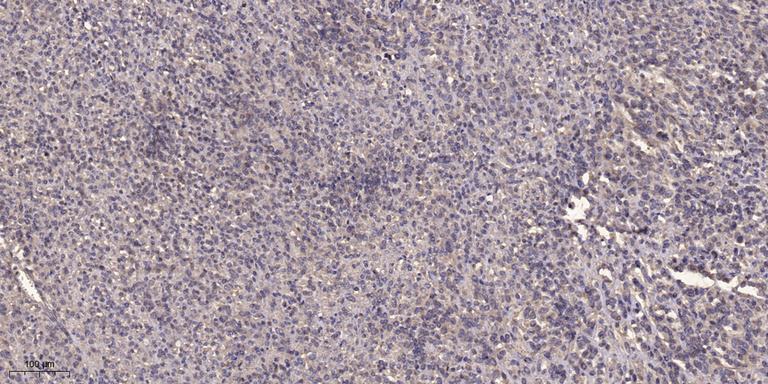RIP140 rabbit pAb
- Catalog No.:YT7831
- Applications:WB;ELISA;IHC
- Reactivity:Human;Mouse;Rat
- Target:
- RIP140
- Gene Name:
- NRIP1
- Protein Name:
- RIP140
- Human Gene Id:
- 8204
- Human Swiss Prot No:
- P48552
- Mouse Gene Id:
- 268903
- Mouse Swiss Prot No:
- Q8CBD1
- Immunogen:
- Synthesized peptide derived from human RIP140
- Specificity:
- This antibody detects endogenous levels of Human,Mouse,Rat RIP140
- Formulation:
- Liquid in PBS containing 50% glycerol, 0.5% BSA and 0.02% sodium azide.
- Source:
- Polyclonal, Rabbit,IgG
- Dilution:
- WB 1:500-2000;IHC 1:50-300; ELISA 2000-20000
- Purification:
- The antibody was affinity-purified from rabbit antiserum by affinity-chromatography using epitope-specific immunogen.
- Concentration:
- 1 mg/ml
- Storage Stability:
- -15°C to -25°C/1 year(Do not lower than -25°C)
- Other Name:
- Nuclear receptor-interacting protein 1 (Nuclear factor RIP140;Receptor-interacting protein 140)
- Molecular Weight(Da):
- 127kD
- Background:
- Nuclear receptor interacting protein 1 (NRIP1) is a nuclear protein that specifically interacts with the hormone-dependent activation domain AF2 of nuclear receptors. Also known as RIP140, this protein modulates transcriptional activity of the estrogen receptor. [provided by RefSeq, Jul 2008],
- Function:
- disease:Genetic variation in NRIP1 may act as predisposing factor for endometriosis.,domain:Contains 9 Leu-Xaa-Xaa-Leu-Leu (LXXLL) motifs, which have different affinities for nuclear receptors. The C-terminal LTKTNPILYYMLQK motif is required for ligand-dependent interaction with RAAR and RXRB homo- and heterodimers, for the corepressor activity, and for the formation of an HDAC3 complex with RARA/RXRB (By similarity). Contains at least four autonomous repression domains (RD1-4). RD1 functions via a histone deacetylase (HDAC)-independent mechanism, whereas RD2, RD3 and RD4 can function by HDAC-dependent or independent mechanisms, depending on cell type. RD2 is dependent on CTBP binding.,function:Modulates transcriptional activation by steroid receptors such as NR3C1, NR3C2 and ESR1. Also modulates transcriptional repression by nuclear hormone receptors.,PTM:Acetylation regulates its nucle
- Subcellular Location:
- Nucleus . Localized to discrete foci and redistributes to larger nuclear domains upon binding to ligand-bound NR3C1.
- June 19-2018
- WESTERN IMMUNOBLOTTING PROTOCOL
- June 19-2018
- IMMUNOHISTOCHEMISTRY-PARAFFIN PROTOCOL
- June 19-2018
- IMMUNOFLUORESCENCE PROTOCOL
- September 08-2020
- FLOW-CYTOMEYRT-PROTOCOL
- May 20-2022
- Cell-Based ELISA│解您多样本WB检测之困扰
- July 13-2018
- CELL-BASED-ELISA-PROTOCOL-FOR-ACETYL-PROTEIN
- July 13-2018
- CELL-BASED-ELISA-PROTOCOL-FOR-PHOSPHO-PROTEIN
- July 13-2018
- Antibody-FAQs
- Products Images

- Immunohistochemical analysis of paraffin-embedded human Colon cancer. 1, Antibody was diluted at 1:200(4° overnight). 2, Tris-EDTA,pH9.0 was used for antigen retrieval. 3,Secondary antibody was diluted at 1:200(room temperature, 45min).


